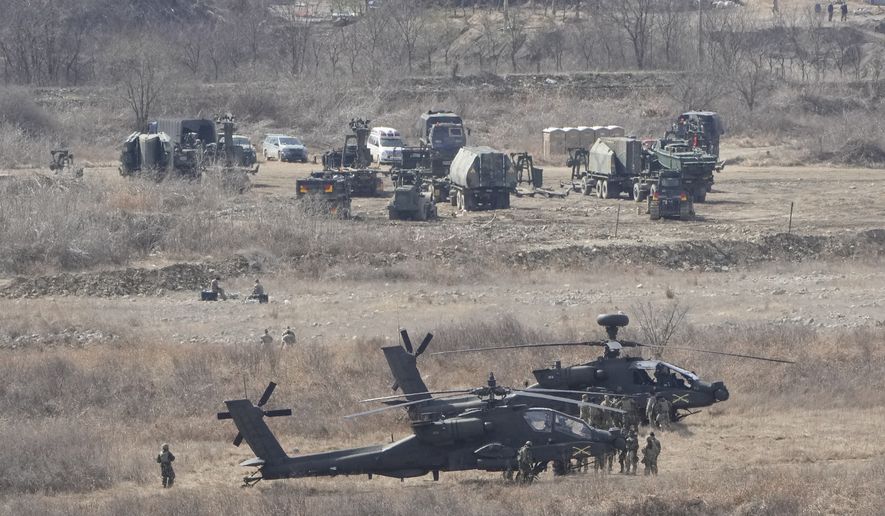The U.S. booked $81 billion in new weapons deals last year as governments around the world sought to replace the stocks that were sent to Ukraine to help fight off a Russian invasion force. The deals amounted to a more than 50% increase in such weapons sales from 2022, the State Department said this week.
Direct commercial sales in 2023 between American companies and foreign governments for hardware, services and technical data for U.S. military weapons was $157.5 billion, a 2.5% increase from $153.6 billion in 2022. That includes deals such as $2.8 billion from Italy for manufacturing F-35 wing assemblies and sub-assemblies and $1.2 billion each from Singapore and South Korea for F-100 jet engines and spare parts, officials said.
All told, the U.S. government programs and private deals sold some $238 billion worth of weapons to foreign governments in 2023, up a 16% increase from the year before.
Poland was their biggest Foreign Military Sales (FMS) customer in 2023, spending $12 billion on AH-64E Apache attack helicopters and $10 billion for the High Mobility Artillery Rocket Systems, HIMARS, which proved to be highly effective on the battlefield in Ukraine.
“This is the highest annual total of sales and assistance provided to our allies and partners,” the State Department said in a statement.
Many European NATO countries, criticized by Washington for failing to meet alliance targets for defense spending, have announced significant increases in the wake of the outbreak of war in Ukraine.
But government officials in Warsaw weren’t interested only in U.S.-built combat aircraft and rockets. Last year, Poland also spent $3.75 billion for M1A1 Abrams main battle tanks and $4 billion for an integrated battle command system.
Arms sales are important U.S. foreign policy tools with potential long-term implications for regional and global security. The U.S. government abides by the U.S. Conventional Arms Transfer policy and follows a “holistic approach” when reviewing military sales, the State Department said.
The U.S. weighs several factors before approving any weapons sales, including political concerns, human rights, non-proliferation and technology security, officials said.
The State Department said current military sales numbers are not necessarily predictive of future deals which could increase or decrease due to several factors, including fluctuating foreign defense budgets and regional security issues.
U.S. officials say the bump in weapons deals reflects in part the decline of Russia’s defense industry, stressed by the Ukraine conflict soon to enter its third year and rocked by sanctions since the February 2022 invasion that have cost it major customers abroad.
“The Russian defense industry is failing and continues to fail,” Mira Resnick, head of the State Department’s Office of Regional Security and Arms Transfers, told Politico in an interview this week. “… We see that because Russia’s defense industry is denied the resources that come from exports, that helps to contribute to Russian strategic failure on the battlefield,” Ms. Resnick said.
The Biden administration says Russia has turned to U.S. adversaries in North Korea and Iran in recent months to keep its forces in Ukraine supplied with ammunition and military drones.
The State Department‘s figures released Monday covered the fiscal 2023 year, which ended in October.
• Mike Glenn can be reached at mglenn@washingtontimes.com.




Please read our comment policy before commenting.